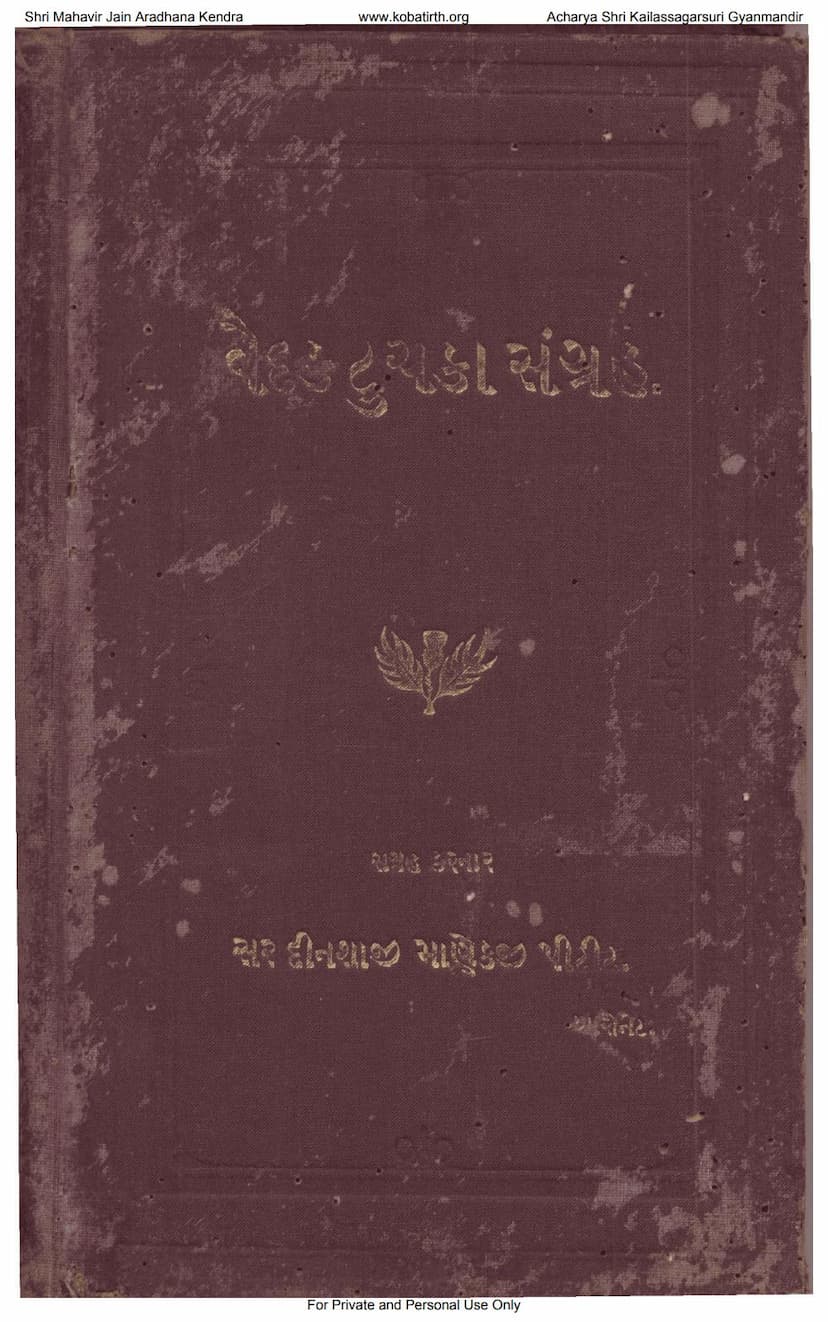Vaidak Tuchka Sangraha
Added to library: September 2, 2025

Summary
The provided text is a Gujarati book titled "Vaidyak Tuchka Sangraha" (Collection of Medical Prescriptions/Tips) by Dinshaji Manekji Petit, published by Bhalchandra Krishna. The catalog link confirms it's a Jain text. The text appears to be a collection of traditional Indian remedies and health advice, compiled from various sources and experiences.
Here's a summary of the content based on the provided pages:
Overall Purpose and Content:
The book is essentially a practical guide to home remedies for a wide range of common ailments. It aims to provide accessible and understandable medical advice, particularly for those who may not have frequent access to qualified medical practitioners. The remedies are based on "ordinary Indian drugs" and traditional knowledge, making them suitable for household use.
Key Themes and Characteristics:
- Comprehensive Range of Ailments: The text covers a vast array of health issues, from digestive problems (indigestion, diarrhea), fevers, respiratory issues (cough, cold), skin conditions (itching, rashes, sores), eye ailments, ear problems, to more specific concerns like snake bites, poisoning, paralysis, and even general weakness.
- Practical and Accessible Remedies: The author emphasizes the simplicity of the language (Gujarati) and the availability of the ingredients used in the remedies. Many ingredients are described as commonly found in "Gandhi's shop" (traditional Indian grocery/herb shop).
- Emphasis on Natural and Traditional Medicine: The remedies largely rely on herbs, spices, fruits, and other natural ingredients known in Ayurvedic and Unani traditions. There's a clear preference for indigenous remedies over expensive or complex treatments.
- Empirical Approach: Several testimonials (included in the initial pages) suggest that many of the prescriptions have been tested and found effective by the author and others. The book is presented as a collection of "practical receipts."
- Author's Dedication: The testimonials highlight Sir Dinshaji M. Petit's dedication to compiling such a useful work, especially considering his other engagements. It's seen as a noble and philanthropic effort to benefit the public.
- Structure: The book is organized by ailment, with each ailment followed by a series of numbered "Ilaj" (remedies). The extensive index-like listing of ailments at the beginning (pages 10-35) demonstrates the breadth of coverage.
- Translations and Adaptability: One testimonial mentions the desire for a Marathi translation, indicating the potential for wider applicability of the remedies.
Specific Content Examples (based on the indexed ailments):
The table of contents reveals a wide array of treatments for:
- Digestive Issues: Ajirna (Indigestion), Atisar (Diarrhea), Amlapitta (Acidity/Gastric problems), Udarpishata (Abdominal pain), Kabjiyat (Constipation).
- Respiratory and Chest Issues: Khanasi (Cough), Shwas (Breathing difficulties), Gale ki khakharat (Throat irritation).
- Skin Conditions: Khaj (Itching), Dag (Spots/Patches), Ghamori (Heat rash), Fophala (Boils/Pustules), Gha/Zakhm (Wounds/Injuries).
- Fever (Tap): Numerous remedies for different types and stages of fever.
- Eye Ailments: Aankh ka dard (Eye pain), Aankhon se pani (Watery eyes), Aankhon mein surkhai (Red eyes), Motia (Cataracts).
- Ear Ailments: Kan mein chaska marna (Earache with itching), Bahira hona (Deafness), Kan se pur behna (Discharge from ear), Kan mein mail (Earwax).
- Neurological and Musculoskeletal: Lumbar pain (Kamar ka dard), Paralysis (Lakwa), Joint pains (Vayu-related pain).
- Poisoning and Bites: Snake bites, Rat bites, Scorpion bites.
- Women's Health: Dastan (Menstruation irregularities), Suvavadi (Post-natal care).
- Other: Hernia (Antargol), Stone problems (Pathri), Cholera (Visuchika), Jaundice (Kamla), Ringworm (Kandara/Dadra).
The "Petit Fever Leaves" (specifically mentioned on pages 194-201):
A significant portion of the latter part of the text is dedicated to "Petit Fever Leaves" (likely referring to Clerodendrum inerme). Dr. Dymock's report is included, detailing the plant's vernacular names in various Indian languages and its medicinal properties. It highlights its effectiveness in treating fevers of all kinds, skin diseases, and purifying blood. The book provides several methods of administration: chewing, infusion, tincture, syrup, and pills, along with specific dosages.
In essence, "Vaidyak Tuchka Sangraha" is a valuable historical document showcasing the practical application of traditional Indian medicine and home remedies, compiled with the intent of widespread public benefit.